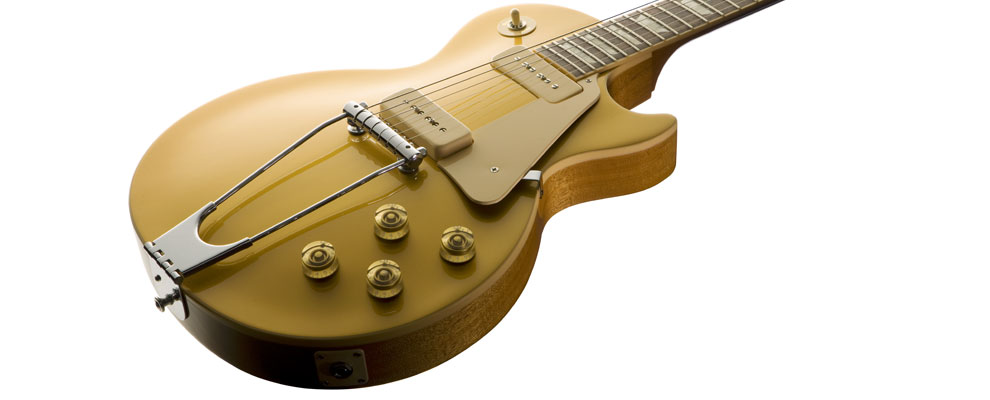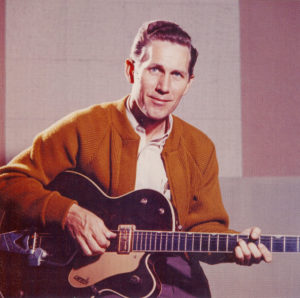
Martin 00-18 & 00-28
Martin 00-18, a stalwart of Martin’s acoustic guitars for 140 years.
Martin 00-18 and Martin-00-28. The 00-28 has rosewood back and sides and 14 frets.

Martin 00-18 and Martin-00-28. The 00-28 has rosewood back and sides and 14 frets.
Lyle J. Ritz, age 87, a resident of Portland, Oregon, died peacefully on March 3rd, 2017. He was best known as one of the original electric and acoustic bass players for the legendary Los Angeles studio group of the 1960s and ’70s, the Wrecking Crew. He was also known for his groundbreaking recordings and passion for a much smaller instrument, the ukulele.

Lyle Ritz with Brian Wilson in the studio.
Born in Cleveland, Ohio on January 10th, 1930, Lyle Ritz was the only son of Alex and Emnalou Ritz. Eventually, the Ritz family relocated to Bridgeville, Pennsylvania where Lyle attended high school in nearby Mt. Lebanon. Following World War II, they moved to Porterville, California. In the fall of 1950, Lyle entered college at the University of Southern California to study music. He also studied the violin, tuba, and cornet.
During Christmas break of 1951, Lyle was involved in a serious car accident and spent the next several months in the hospital. While recovering, he lost his student draft deferment. Lyle was drafted into service for the Korean conflict and reported for duty at Fort Ord, California on September 2nd, 1952. His talents on the tuba, however, kept him on the mainland as a member of the 6th Infantry Division Band.

Lyle Ritz and his sousaphone tuba.
Following his honorable discharge in 1954, Lyle enrolled in the Pasadena ArtCenter College of Design. He would study during the day and play music in the nightclubs and jazz dives at night. In 1957 he recorded How About Uke?, a jazz ukulele album for Verve Records. Playing a tenor ukulele, Lyle tackled standards like “Don’t Get Around Much Anymore” and “Lulu’s Back In Town” in a style more reminiscent of modern jazz than backyard luau. Though the record was not a success on the mainland, that album and its follow-up, 50th State Jazz, found their way to Hawaii and (unbeknownst to Lyle at the time) created a stir, becoming cult classics, and influencing a new generation of players.

Lyle Ritz: How About Uke?
Lyle eventually became known for a much larger instrument—the string bass. As a member of the Wrecking Crew in the ’60s and ’70s, he contributed to some 5,000 recording sessions, including “Good Vibrations,” “You’ve Lost That Lovin’ Feeling,” “I Got You Babe” and “A Taste Of Honey.” It wasn’t until he was asked to provide the backing ukulele track to the song “Tonight You Belong To Me,” featured in the Steve Martin movie The Jerk, that he picked up his uke again.

Lyle Ritz and the Wrecking Crew during the Beach Boys Pet Sounds sessions.
In 1985 Lyle received a phone call from Hawaiian ukulele teacher, Roy Sakuma. Sakuma was searching for the guy who made those ukulele albums in the late 1950s. As a result, Lyle, his wife, Geri, and young daughter, Emily, moved to Hawaii in April 1988. Lyle focused on the ukulele for the next decade; arranging songbooks, recording and performing. During this period, the ukulele saw a resurgence of interest both on the islands and the mainland.
In August of 2003, Lyle and Geri moved to Portland, Oregon where Lyle continued to record. In 2007, Lyle Ritz was inducted into the Musician’s Hall of Fame and Museum in Nashville, Tennessee for his studio bass work and also inducted into the Ukulele Hall of Fame. In 2004, Verve reissued How About Uke? on CD.
Lyle had a lifelong love of trains and vintage cars and for many years he owned the car featured in the last scene of the movie, Casablanca. He was also a pilot and was known to fly fellow musicians to Catalina Island for lunch while on break from the recording studio.
Lyle is survived by his wife of 40 years, Geri Ritz, his daughter, Emily Ritz and adoptive son, Thomas Ritz. Thomas Ritz has two daughters, Lauren and Jenna Ritz.

Lyle Ritz: 1930-2017

The iconic Les Paul guitar has inspired generations of guitar players. In this video, we discuss the trapeze tailpiece on the original Les Paul.

Chet’s invention of a new style of playing and thoughtful design of instruments created the sound of a generation of guitar players.

https://en.wikipedia.org/wiki/Chet_Atkins
http://www.misterguitar.us/

The 000-18 was perceived to be a lesser Martin. Yet in the hands of Davy Graham, Alexis Korner, Martin Carthy, and Richard Thompson, the 000-18 defined the sonic DNA of celtic and contemporary English folk music.

Davy Graham

Alexis Korner

Martin Carthy
On the other side of the Atlantic, contemporaries such as Ry Cooder were redefining blues with the 000-18.

Ry Cooder
We were delighted a couple of years ago when Martin decided to redesign the 000-18. Taking their cues from the 1930’s, Martin gave the 000-18 a 1 ¾” nut, ebony fingerboard and bridge and “tortus” body bindings and pickguard. The vintage style “Waverly” inspired tuners used on the 000-18 take weight off the headstock and create excellent body to neck balance to this already very light weight guitar.
The 000-18 is sonically open, yet balanced with a dry, haunting woody tone. These characteristics are sought after in vintage Martin 000-18’s, which sell for 10x the price of a new 000-18.

The body of the White Falcon is 17 inches wide, larger then most of Gretsch’s hollowbodies, and the guitar features a gold sparkle pickguard with an engraved Falcon.
Over the years the White Falcon has undergone some minor changes, but it is still as striking and recognizable as it was in 1954.
Young’s 1961 White Falcon is not his primary electric guitar for stage and studio work, but he is still known as one of the foremost White Falcon players. He used the guitar frequently in the early stages of his career with Buffalo Springfield and Crosby, Stills, Nash & Young. His long time guitar tech Larry Cragg says, “That’s the real deal. Neil’s had it forever. It’s kind of green looking and really stunning.”


The Cult’s Billy Duffy may be the player most frequently associated with the White Falcon. Duffy used a White Falcon he purchased in 1981 through most of his work in the 1980s. Gretsch even introduced a Billy Duffy signature model White Falcon.
“They do look cool but the distinctive sound is really important to me and it’s something I’ve really experimented with. I’ve tried to go for something … cinematic. I didn’t want the surf thing or rockabilly, and I didn’t even want to do Ennio Morricone – I wanted it to be psychedelic. It’s a feeling I pursued, and I still am.”


Another iconic White Falcon player is Stephen Stills. Stills has used all manner of different acoustic and electric guitars over his long and storied career, but frequently has been seen with a White Falcon, usually his 1958 model that was replicated in the signature model that Gretsch has periodically produced over the years.

